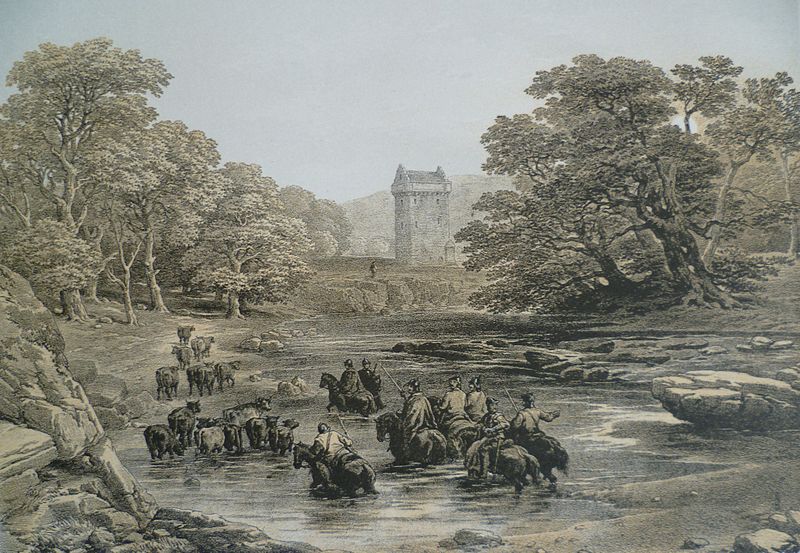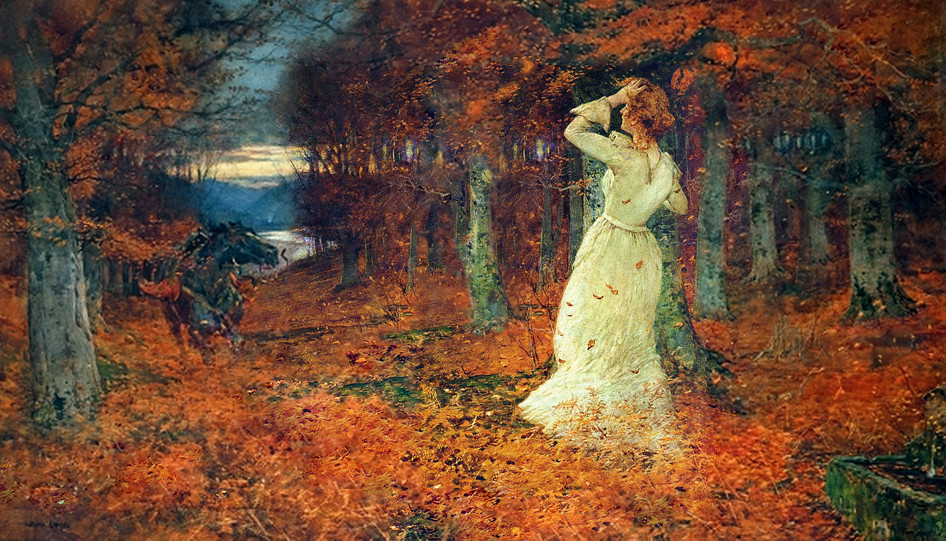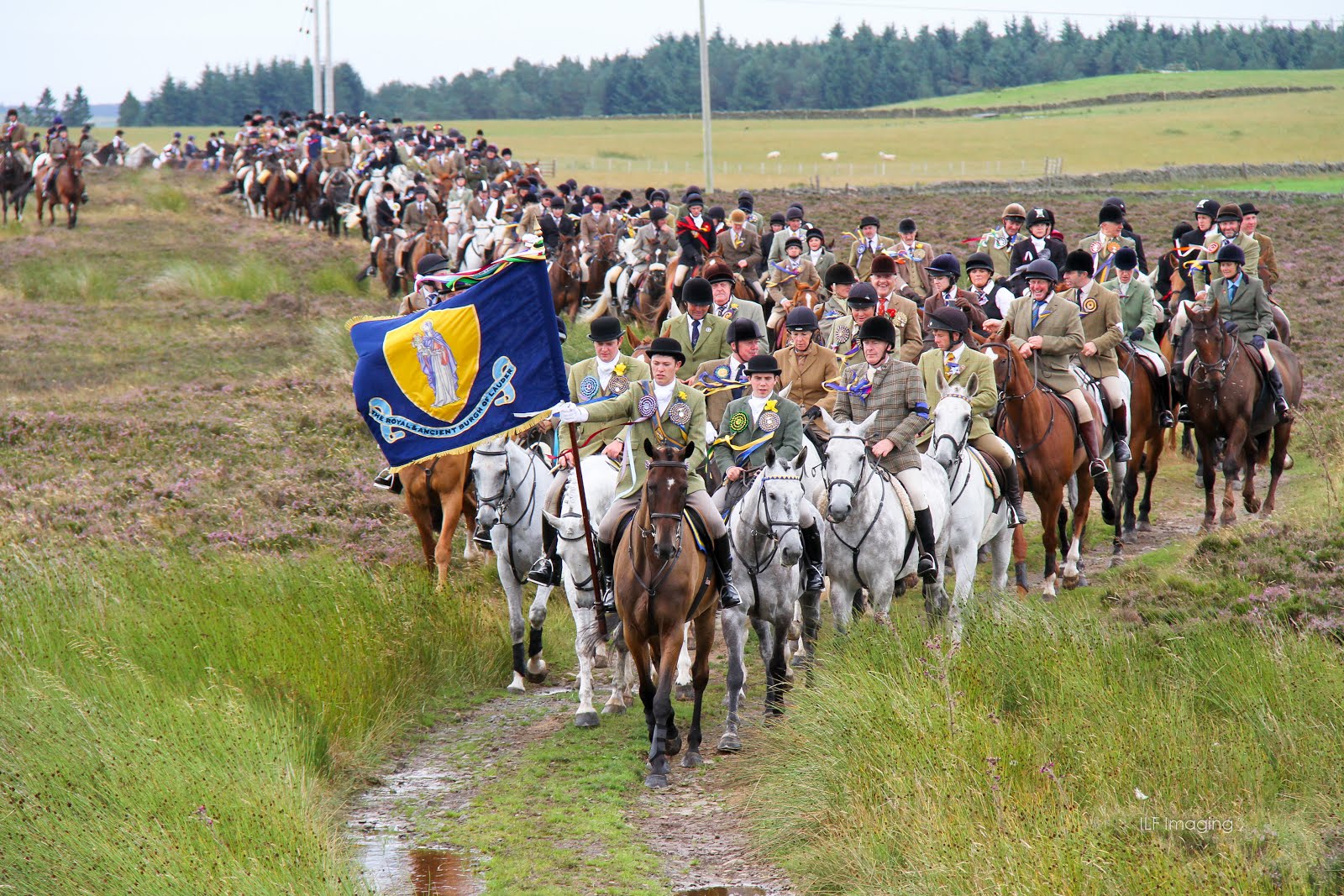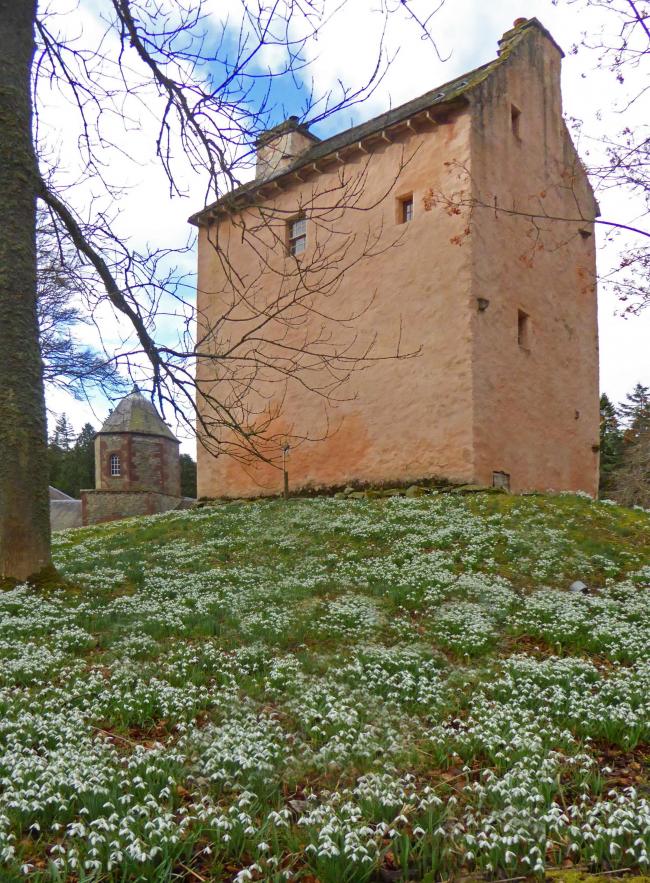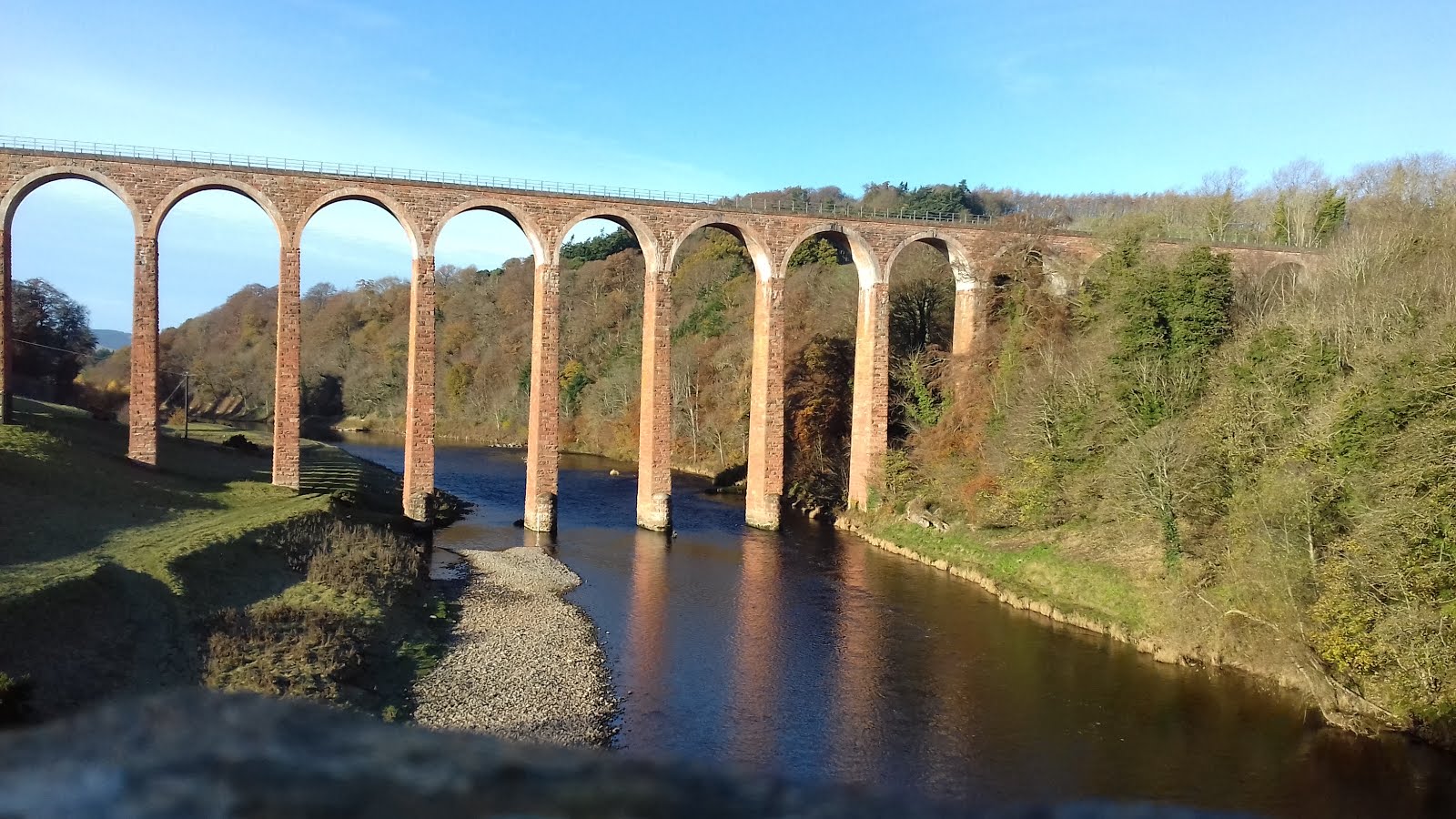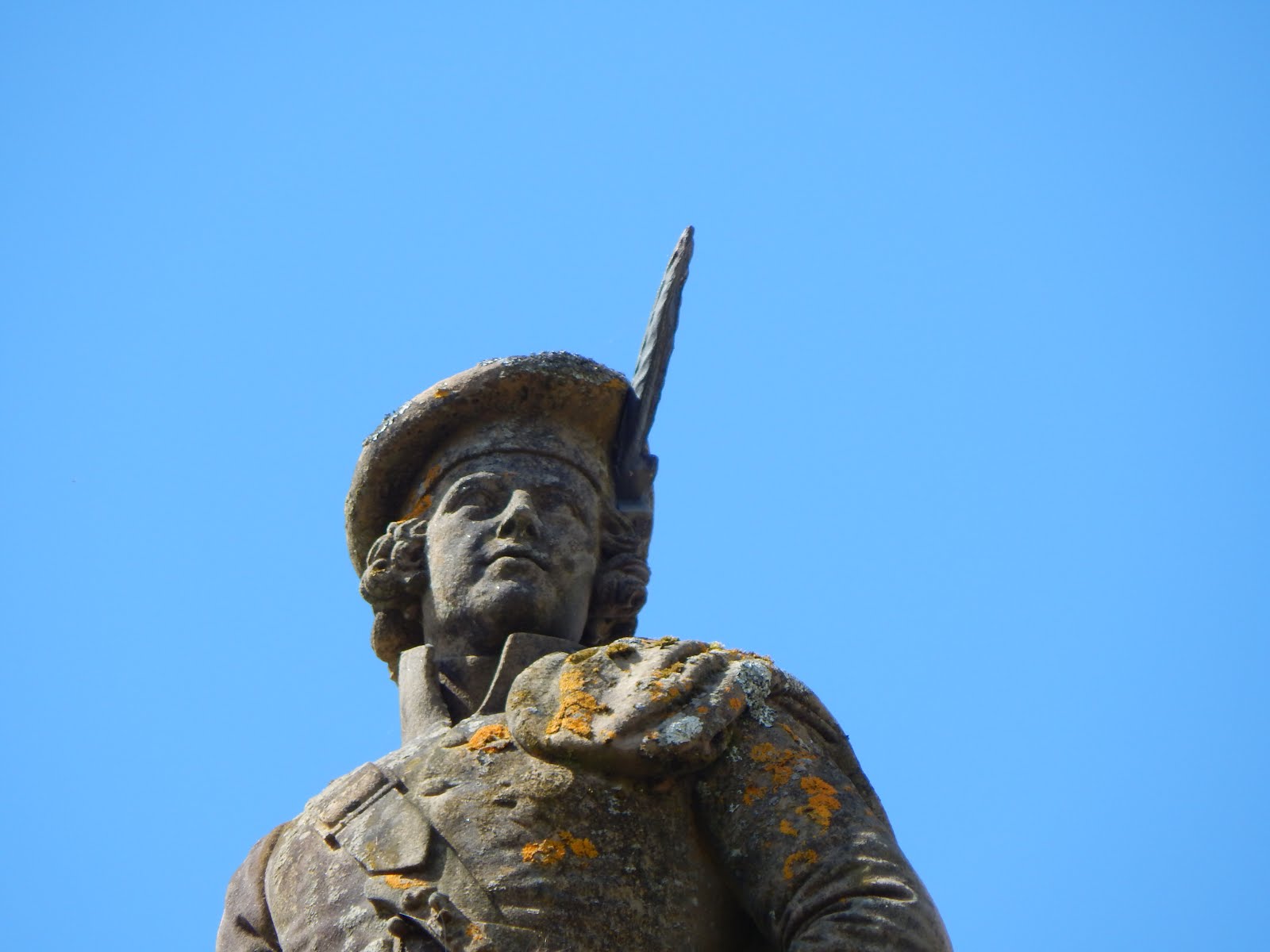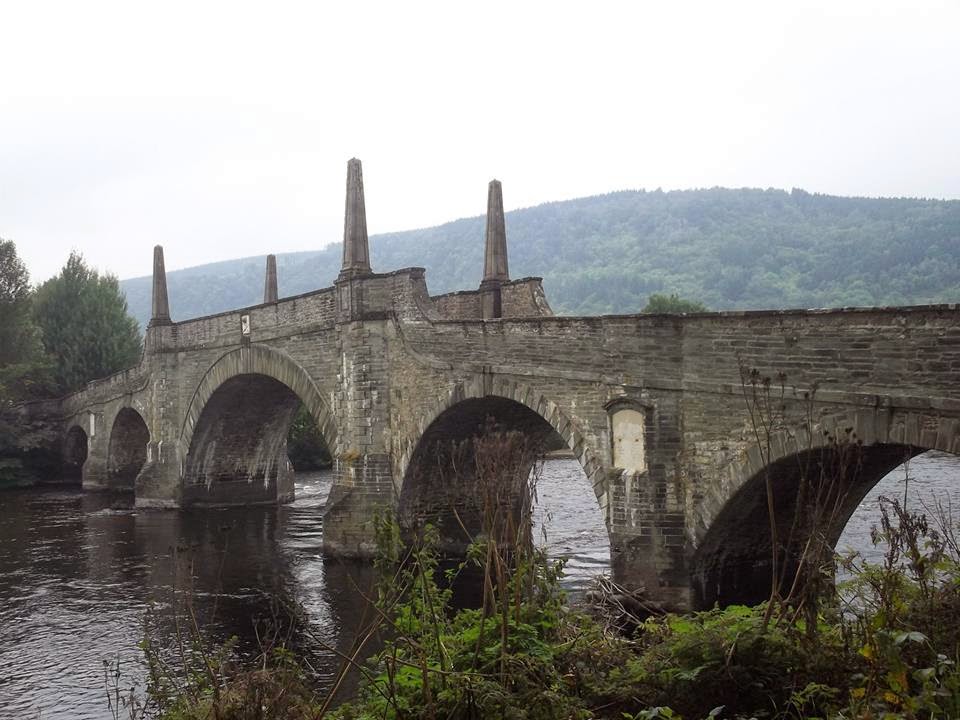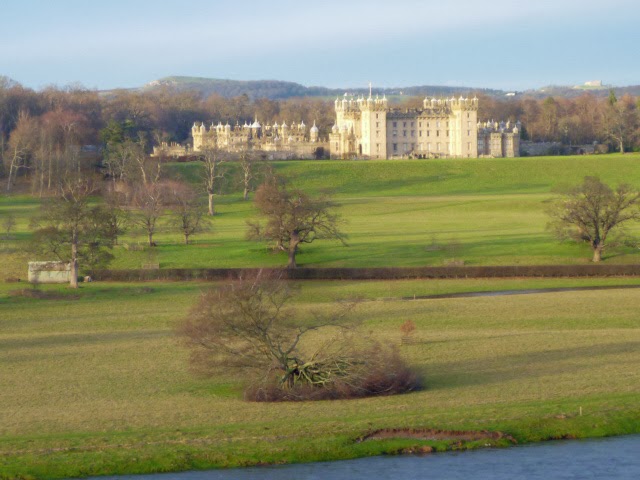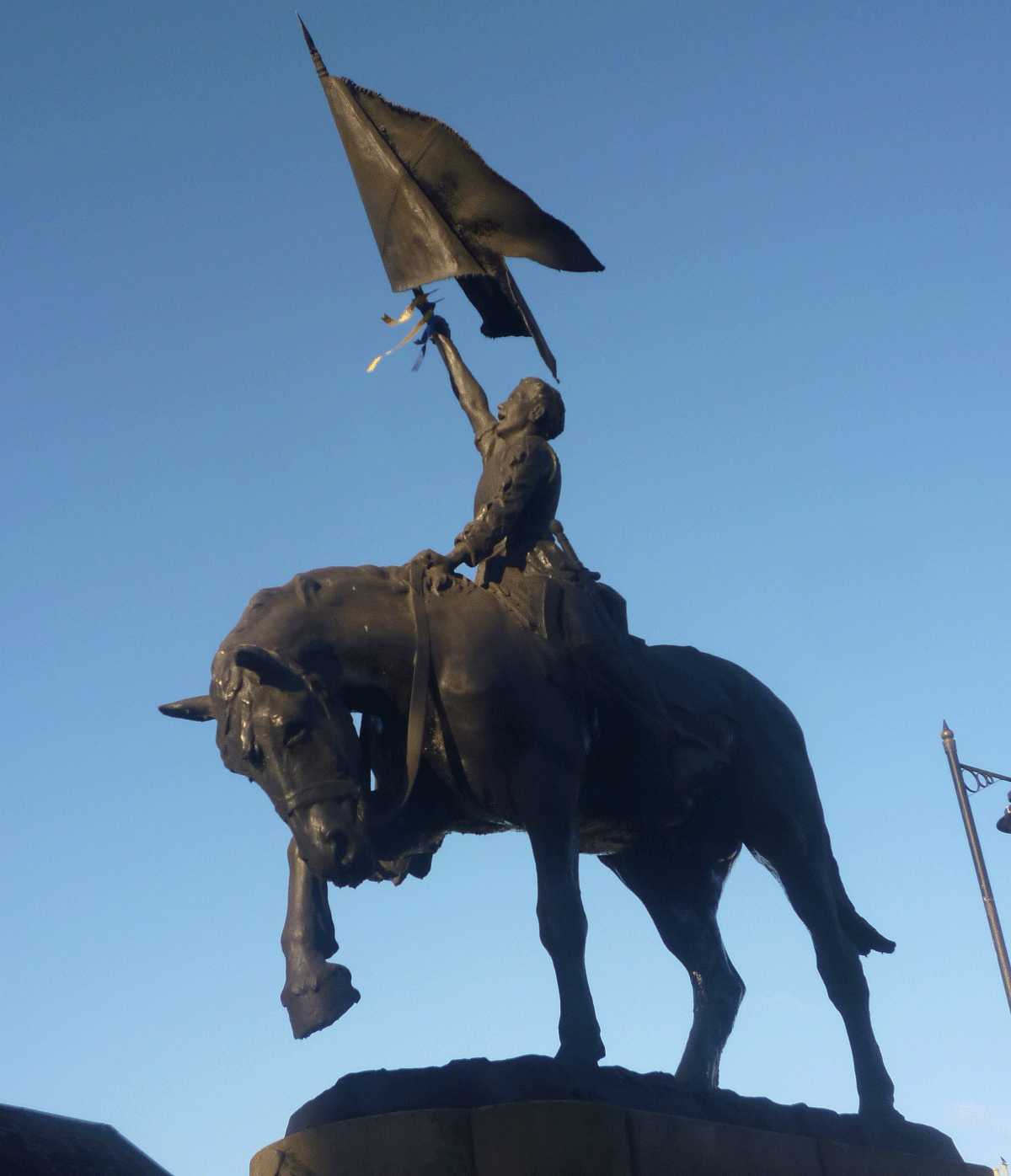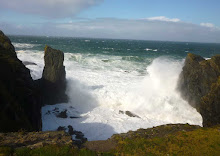 |
| The Flodden Monument |
Look into the history of any Scottish name and you will wince at what was lost at Flodden in 1513. Not just our best king since Robert the Bruce, but 10,000 men including most of Scotland's nobility. William Cunningham 1st Laird of Craigends, son of the first Earl of Glencairn, died (his father died fighting the English at Sauchieburn in 1488). Hugh Montgomerie, 1st Earl of Eglinton, fought and escaped. Their neighbour in the south west, David Kennedy, 1st Earl of Cassilis died.
Kings of Scots at this time struggled to make their writ run throughout what they considered to be their kingdom, but the Flodden dead came from all parts. Archibald Campbell 2nd Earl of Argyll and Hector, 9th Chief of Clan MacLean in the west; from the north William Sinclair 2nd Earl of Caithness; from the north east William Graham, 1st Earl of Montrose and both sons of William Keith, 3rd Earl Marischal.
Quite naturally most came from the Borders. Every year at Selkirk as part of the Common Riding celebrations, the town's Standard Bearer recalls Fletcher, the town's sole survivor, who returned with a captured English banner and when asked where the other men were, he silently laid it on the ground.
 |
| Selkirk Common Riding |
I was at Flodden yesterday (it's about an hour from my house) on a fine spring afternoon. Between the monument and Branxton Hill is 'the boggy ground' where about 10,000 Scots died. Now it is drained and under efficient cultivation. A monument was erected nearby in 1910. The dozens killed in the Montgomery-Cunningham feud are inconsequential by comparison.
And if you ask what the battle was all about...it's complicated. James IV aimed to relieve pressure on his ally the King of France but Niall Barr in his excellent book on Flodden also notes, "James had achieved much in his reign, but he had never won a pitched battle - which remained the ultimate accolade for a Renaissance prince". We've had a few frustrated would-be princes ready to sacrifice lives in our 21st century too.






